Interactives
Latest

Discover. Learn. Excel.
2024
Ready to contribute to a more sustainable future? Dive into our interactive story and see how to boost your skills with the FAO elearning Academy!
FAO Investment Centre - 60 years young
2024
t’s the FAO Investment Centre’s 60th anniversary! You’re invited take an interactive look back over our achievements in working towards a healthier, more sustainable and equitable future!
The Food Loss and Waste Challenge
2024
Think you know all there is about food loss and waste? Time to prove it! These brainteasers, quizzes, and crosswords will put your knowledge to the test
Understanding food insecurity
Insights through the lenses of gender and urbanization
2024
Understanding who faces food insecurity and where helps us to work towards a food-secure future for everyone.
Agrifood systems, agricultural trade and markets

Beyond the price tag
Examining the hidden costs of agrifood systems to enhance their true value
2023
What’s the true value of the food we buy? Go beyond the price tag with our interactive story and see where your country stands.
In agrifood systems, not everyone's experience is equal
The status of women in agrifood systems
2023
Women play a vital role in our agrifood systems, but their working conditions and economic opportunities are impacted by gender inequalities. Join in on the conversation and help grow equality in agrifood systems.
The geography of food and agricultural trade
Policy approaches for sustainable development
2022
How can trade policies in food and agriculture address today's challenges and how can they contribute to long-term sustainable development for all?
Is our food supply at risk?
Making agrifood systems more resilient to shocks and stresses
2021
The economic fallout of the COVID-19 pandemic, climate variability and extremes, conflict, and the persistence of hunger and malnutrition have shown us that now is the time for us to build more resilient agrifood systems.
The State of Agricultural Commodity Markets
2020The State of Agriculture Commodity Markets 2020 report underlines that we need to rely on markets as an integral part of the global food system. |  |
Biodiversity

No small matter
FAO Commission on Genetic Resources for Food and Agriculture
2022
Biodiversity is essential to sustainable food and agriculture. The species, genetic resources and ecosystems in and around our food production systems have important roles to play. From bees and earthworms to coral reefs and rainforests, biodiversity helps to keep our agrifood systems healthy, productive and resilient.
What's the buzz about bees?
See the world’s forests in a new light
2022
Take our bee quiz and learn more about these tiny food heroes.
Enter a hidden world
The State of Knowledge of Soil Biodiversity
2021
Discover life belowground: from genes and species to the communities they form. Learn what is threatening soil biodiversity and what are the steps we need to take to protect it.
The State of the World’s Biodiversity for Food and Agriculture
2019
The State of the World’s Biodiversity for Food and Agriculture presents the first global assessment of biodiversity for food and agriculture worldwide. Biodiversity for food and agriculture is the diversity of plants, animals and micro-organisms at genetic, species and ecosystem levels, present in and around crop, livestock, forest and aquatic production systems.
Emergencies and resilience

Agricultural aid is humanitarian aid
Supporting farmers benefits us all
2024
Let's take a look at how FAO is helping farmers to strengthen their resilience in the face of emergencies and an ever-changing landscape of challenges.
Knowledge keeps moving even when people cannot
2022
Discover how isolated rural communities can navigate a safe path through the COVID-19 pandemic.
A threat from the desert
The Desert Locust
2022
What are desert locusts and what makes them such a threat exactly? Let’s get up close and personal with this potentially devastating pest.
The Impact of Disasters and Crises on Agriculture and Food Security
Damage and loss: Agriculture on the proving ground
2021
This interactive story gives you a close-up look at which disasters affect agriculture the most and what impacts they have on the sector.
Fisheries and aquaculture

The tide is turning
2024
From the amount of aquatic food produced annually to millions employed, aquatic food systems are proving their vital role in nourishing & sustaining a growing population. Take a closer look at the sector from 5 key angles.
Towards Blue Transformation
A vision for transforming aquatic food systems
2022
Aquatic systems have great potential to support millions of lives and livelihoods and contribute to food security. If positively transformed and expanded, they can meet the twin challenge of feeding a growing population while preserving natural resources and the ecosystems that sustain them. Discover what sustainable aquatic food systems look like.
Sustaining our ocean
Strengthening the science-policy nexus
2020
This report lays out that vision while sharing recommendations that are key to improving the sustainability of capture fisheries and sustain progress towards the Sustainable Development Goals.
The State of World Fisheries and Aquaculture
Sustainability in action
2020
With a special focus on sustainability, the 2020 edition is a source of objective, reliable and up-to-date information for policymakers, managers, scientists, stakeholders - and indeed everyone interested in the fisheries and aquaculture sector.
The State of World Fisheries and Aquaculture
2018Meeting the sustainable development goals The 2018 edition of The State of World Fisheries and Aquaculture emphasizes the sector’s role in achieving the 2030 Agenda for Sustainable Development and the Sustainable Development Goals, and measurement of progress towards these goals. |  |
Food loss and waste

The Food Loss and Waste Challenge
2024
Think you know all there is about food loss and waste? Time to prove it! These brainteasers, quizzes, and crosswords will put your knowledge to the test
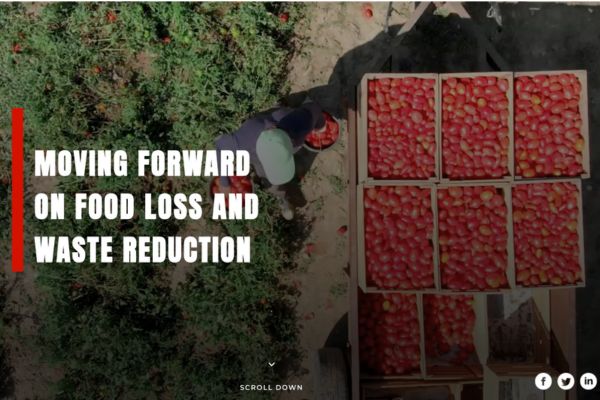
Moving forward on food loss and waste reduction
2019
The report provides some guiding principles for interventions based on the objectives being pursued through food loss and waste reductions, be they in improved economic efficiency, food security and nutrition, or environmental sustainability.
Food security

Understanding food insecurity
Insights through the lenses of gender and urbanization
2024
Understanding who faces food insecurity and where helps us to work towards a food-secure future for everyone.
Putting a number on hunger
Different measures for different purposes
2023
What do we mean when we talk about hunger exactly? And how do we calculate this number? Read the interactive story to find out how hunger is measured.
A tale of empty plates
Food security and nutrition around the world
2022
See the latest updates on the global situation. It’s time to put an end to the tale of empty plates.
The State of Food Security and Nutrition in the World
The world is at a critical juncture
2021
So, if the world is at a critical juncture, where do we stand now? And what can be done to help us build forward better and put us on track to achieving Zero Hunger?
The State of Food Security and Nutrition in the World
2019This year’s report presents evidence that the absolute number of people who suffer from hunger continues to slowly increase. The report also highlights that food insecurity is more than just hunger. | .jpg?sfvrsn=72c5ccfa_2) |
The State of Food Security and Nutrition in the World
2018Building climate resilience for food security and nutrition The report says that climate variability and extremes are key drivers behind this rise, together with conflict and economic downturns, and are threatening to erode and reverse gains made in ending hunger and malnutrition. | 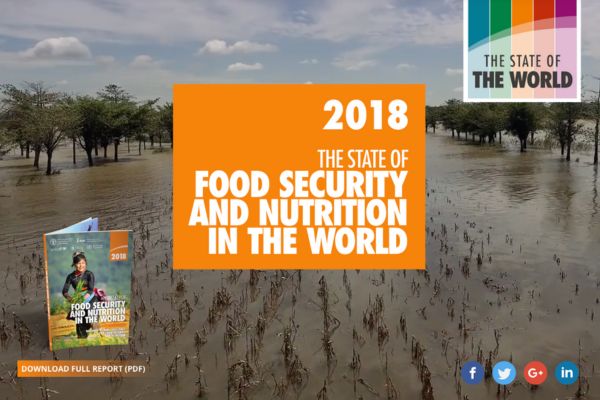 |
The State of Food Security and Nutrition in the World
2017Building resilience for peace and food security This year’s The State of Food Security and Nutrition in the World warns that the long-term declining trend in undernourishment seems to have come to a halt and may have reversed, largely on account of the above-mentioned factors. |  |
Forests

Harnessing technology and innovation to transform our forests
Forests are one of the planet's greatest resources. But climate change and human impact pose growing threats
2024
World leaders have committed to halt deforestation and restore 1 billion hectares of degraded land by 2030.
Unlocking the secrets of mangroves
Mapping and tracking mangrove forests to safeguard these ecological treasures
2023
Mangroves are ecosystems that protect us from climate change, conserve biodiversity, support livelihoods & so much more. For the first time, FAO and experts have mapped the current state of mangrove forests and how they have changed over time.
Exploring our forests
See the world’s forests in a new light
2022
Take a look at our forests from two different vantage points. Along the way, you’ll get some fascinating insights into the valuable role they play in our lives.
The State of the World's Forests
Forest, Biodiversity and People
2020
This interactive story explores the future of forests and the ways in which we can ensure their sustainability, protecting them for future generations.
Global Forest Resources Assessment
2020A fresh perspective The Forest Resources Assessment 2020 examines the status of, and trends in, these forest resources across 236 countries and territories from 1990–2020.
|  |
Hidden in plain sight
2019Trees, forests and land use in drylands: the first global assessment This report - the first of its kind - demonstrates that drylands are productive landscapes with considerable economic potential and environmental value.
|  |
The State of the World's Forests
2018Forest Pathways to Sustainable Development For the first time, The State of the World’s Forests 2018 provides an assessment of the contribution of forests and trees to our landscapes and livelihoods. |  |
Maps

FAO Hunger map
2020-2022
Explore FAO's hunger map and navigate through regions, subregions and countries to discover the state of the prevalence of undernourishment and food insecurity.
SDG Indicator 2.1.1. - Prevalence of Undernourishment (PoU)
2021
The map has been created using the Prevalence of Undernourishment (PoU) and Number of Undernourished (NoU) indicators.SDG Indicator 2.1.2. - Moderate or severe food insecurity
2021
Our interactive map lets you see and compare the levels of hunger globally and by country over time. The map looks at moderate and severe food insecurity based on the Food Insecurity Experience Scale (FIES) measurements.
SDG Indicator 2.1.1. - Prevalence of Undernourishment (PoU)
2020The map has been created using the Prevalence of Undernourishment (PoU) and Number of Undernourished (NoU) indicators. |  |
SDG Indicator 2.1.2. - Moderate or severe food insecurity
2020The map looks at moderate and severe food insecurity based on the Food Insecurity Experience Scale (FIES) measurements. |  |
Migration and rural development

Migration, Agriculture and Rural Development
2018
The report provides a thorough analysis of the factors in rural areas which contribute to migration decisions and recommends tailored policy and investment responses to make migration work for all.

Leveraging food systems for inclusive rural transformation
2017
It shows how an “agroterritorial” planning approach, focused on connecting cities and towns and their surrounding rural areas, combined with agro-industrial and infrastructure development can generate income opportunities throughout the food sector and underpin sustainable and inclusive rural transformation.
Partnerships and SDGs
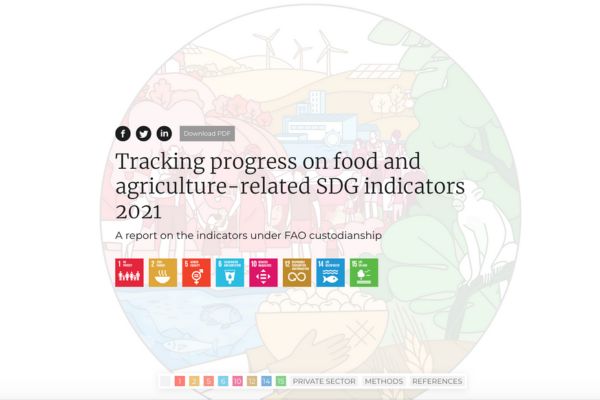
Tracking progress on food and agriculture-related SDG indicators
A report on the indicators under FAO custodianship
2021
2020 was an extraordinary year in recent history. The pandemic has already shaken the 2030 Agenda for Sustainable Development to its very core and, as it continues, the full effect on the progress towards the achievement of the Sustainable Development Goals (SDGs) is still to be determined.
Want to know more about our work towards achieving the SDGs? See progress reports from 2022 onwards.
Resources, Partnerships - Impact
2020
The Resources, Partnerships – Impact 2020 shows how FAO worked in collaboration with multiple stakeholders in 2019, maximising partnerships for greater results on the ground.
Tracking progress on food and agriculture-related SDG indicators
2020
This report details the progress we have made over the past year towards achieving the goals under FAO custodianship, including SDG 2 (Zero Hunger), SDG 5 (Gender Equality) and SDG 12 (Responsible consumption and production).Resources, Partnerships, Impact
2019
The second edition of FAO´s annual report on partnerships, results and achievements seeks to communicate, in a transparent and accountable way, who FAO is, what we do, and how we work with our partners and diverse United Nations agencies to achieve the Sustainable Development Goals (SDGs).
Tracking progress on food and agriculture-related SDG indicators
2019This report is meant to help countries get back on track in their efforts and to highlight the importance of data and reporting in achieving these objectives. |  |
2017 Result Partnerships - Impact
2018This report captures selected results achieved by FAO worldwide in 2017. It reflects key impacts obtained thanks to a collaboration with a wide range of partners including Member Nations, other resource partners, civil society, the private sector, academia, research centers and cooperatives. | 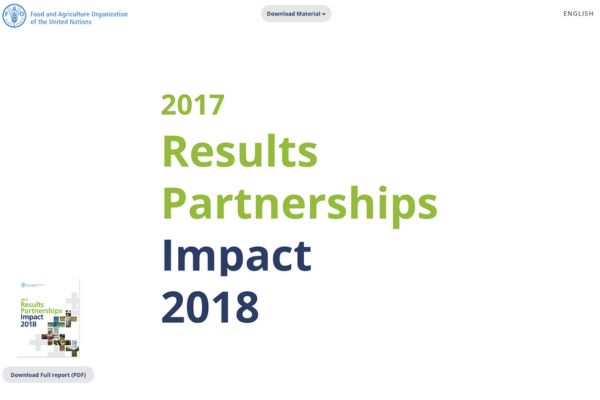 |
School nutrition

Making school meals tasty
Celebrating the work of school foodservice staff
2023
Making sure that school meals follow nutrition guidance and are enjoyed by all students is not always an easy task, but a very important one. After all, not only are healthy diets crucial for children's development and wellbeing, but the enjoyment of food is part of the right to food too.
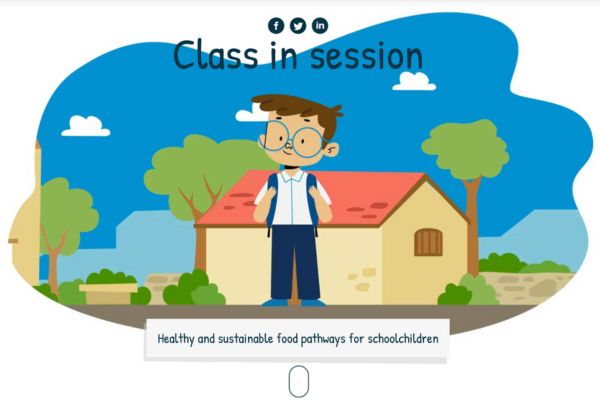
Class in session
Healthy and sustainable food pathways for schoolchildren
2021
For school children and adolescents, healthy diets are essential to grow, develop and be protected from disease. Here is how we can all play our part to ensure healthy school nutrition.
Other

Food safety is everyone’s business
When it comes to keeping food safe, everyone has a role to play. Together, we can prevent foodborne illnesses and promote well-being for all.
2024
Take our quiz on food safety and find out what you can do to prevent foodborne illnesses in case of unexpected events.
Follow the seeds
Every seed holds a story of hope
2024
Preserving the diversity of crops and seeds in our global food basket is at the core of ensuring food and nutrition security. Discover how!
Achieving SDG2 without breaching the 1.5C threshold
A Global Roadmap
2023
Accelerated climate actions can transform agrifood systems and help achieve food security and nutrition both today and tomorrow.
Mechanization in action
Explore the past, present and future of agricultural mechanization
2023
Sustainable agricultural mechanization is not just about machinery. Let’s take a look at how agricultural mechanization has evolved and how it can help us tackle pressing global issues.
Bioeconomy 101
2023A crash course in the biological resources around usOften hear people talk about the ‘bioeconomy’ but you don’t know what it is? Take our crash course and find out! | 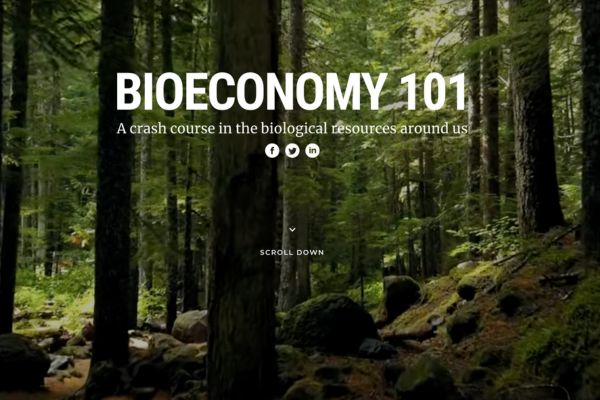 |
What a year for FAO.org
2023Did you know that, in 2023, visitors to fao.org spent a combined 48 years browsing the site? Discover more fun FAO website facts from the year that was! |  |
Expanding Africa’s Great Green Wall
2022See how FAO supports this initiative to combat climate change, desertification and address food insecurity. |  |
Overcoming water challenges in agriculture
2020Our interactive story takes a look at water challenges in agriculture and presents appropriate solutions. |  |









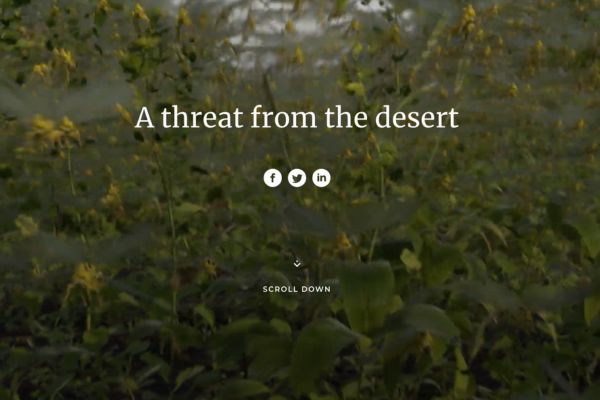







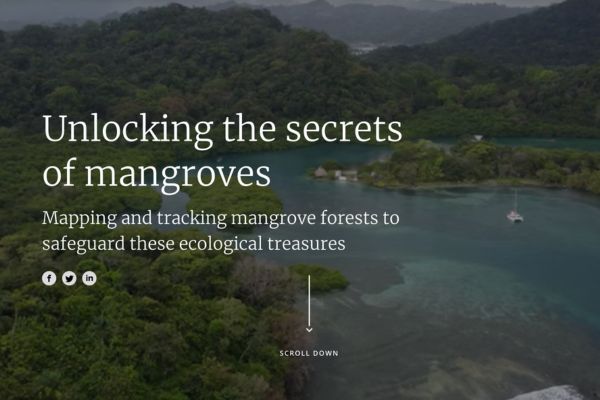

.jpg?sfvrsn=5d6ff380_4)


.jpg?sfvrsn=210075ab_1)




